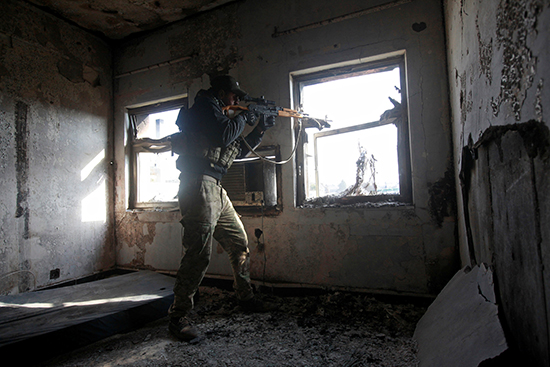The Committee to Protect Journalists has a new Emergencies Response Team. The ERT will be posting updates on safety for journalists as we think necessary. This is the first one.
The military campaign to retake the Iraqi city of Mosul from the Islamic State (IS) group is one of the most important international news events of the year, and journalists have arrived in Northern Iraq in large numbers. Unsurprisingly, competition among media organizations for breaking news is fierce. At the same time, improvised explosive devices (IEDs), snipers, suicide bombers, car bombs and indirect fire have made reporting from the front lines increasingly dangerous.
Since October 20, 2016, at least 14 Iraqi journalists have been injured, and two–Ahmet Ahmet Haceroğlu of Türkmeneli TV and Ali Risan of Alsumaria–have been killed, according to CPJ research.
In recent days, the fighting has moved from the plains surrounding Mosul into the Eastern suburbs and has become even more intense. It is difficult for any military to engage in urban warfare, and the Iraqi Security Forces (ISF) have had a lot of experience this year. In Mosul, however, IS resistance has been formidable and the number of Iraqi military casualties has been high.
IS have proven adept at luring their enemy into ambushes in the built up neighborhoods. According to embedded journalists and security advisors, ISF have been keen to accommodate the media.
However, ISF failure to clear buildings as they advance has left the Iraqi units vulnerable. Convoys have entered tight streets without mutual support or contingency planning in case of attack. This has allowed IS fighters to surround these units and strike to devastating effect.
Recent and dramatic reporting from the BBC, CNN and CBS has demonstrated the dangers for journalists embedded with the security forces when under attack and unable to be evacuated.
Embedding is the only way to currently get to the heart of the action in Mosul, but at what cost? As the dangers increase, newsroom managers and those in the field should be weighing risk versus reward.
If newsrooms decide to limit operations and minimize direct risk, freelancers and local journalists, determined to capture the story and to remain in the frontlines, will be increasingly vulnerable.
Independent journalists have a responsibility to themselves to manage their safety correctly. As a bare minimum, they should be properly trained, equipped and insured.
News organizations looking to commission or purchase footage from independent journalists must in turn encourage good practice. News organizations must have rules in place on how to engage freelancers. They must also ask detailed questions regarding journalists will be operating.
CPJ encourages local, freelance journalists and media organisations covering the Mosul offensive to closely follow the safety principles and practices of the ACOS alliance, which can be found here.
For more information on conditions for journalists working in Iraq, visit CPJ’s devoted page on our website. For additional and detailed safety information, visit see CPJ’s Journalist Security Guide.
